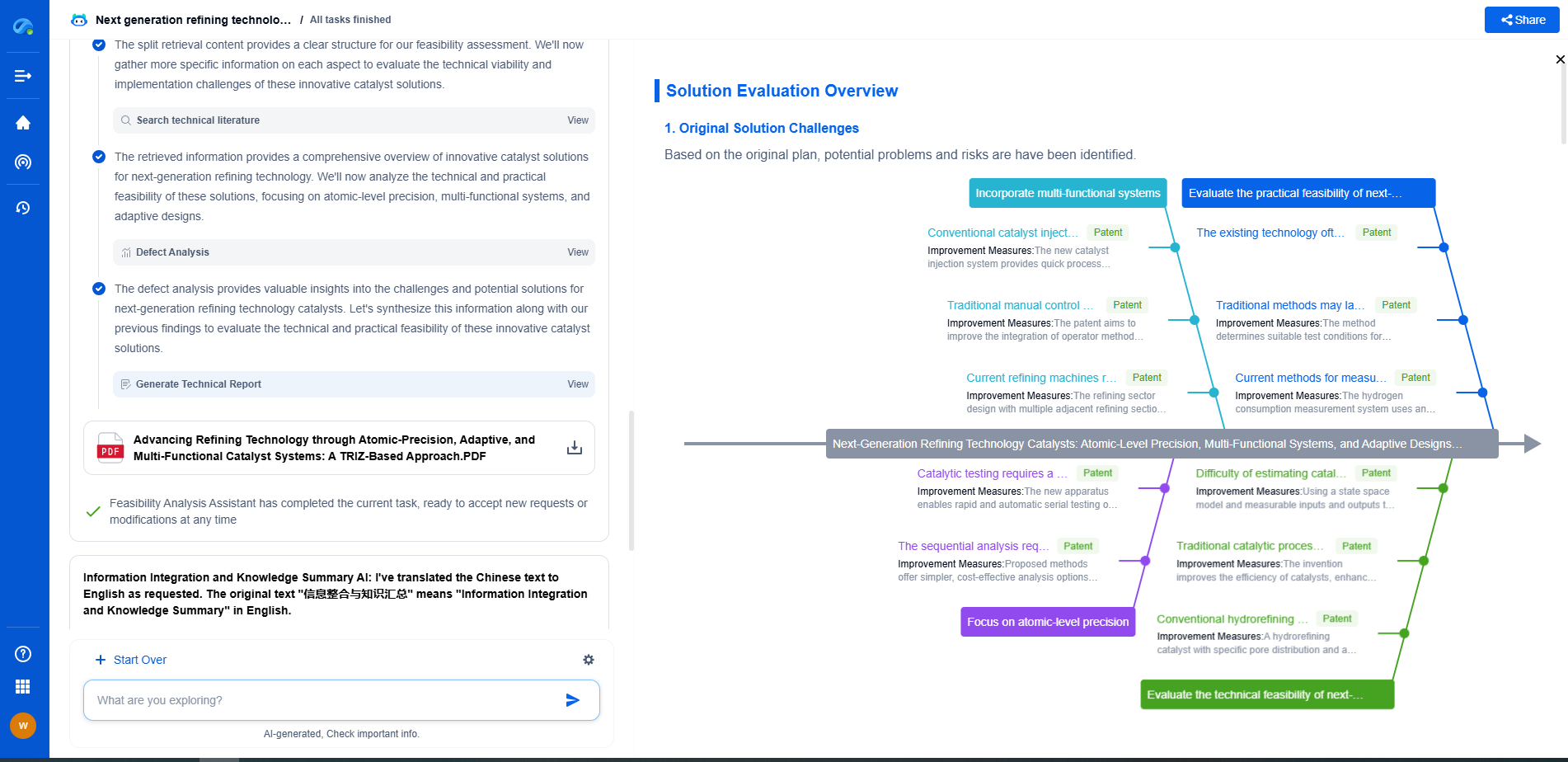What is repeatability in industrial robots?
JUN 26, 2025 |
Introduction to Industrial Robotics
In today's manufacturing landscape, industrial robots play a crucial role in enhancing productivity, precision, and efficiency. These robots are designed to execute predefined tasks with a level of accuracy and speed that surpasses human capabilities. One of the key performance metrics that determine the effectiveness of these robots is their repeatability.
Defining Repeatability
Repeatability refers to the ability of an industrial robot to return to a specific position and orientation repeatedly over multiple cycles. In simpler terms, it measures how consistently a robot can perform the same task. High repeatability is essential in industries where precision is critical, such as automotive manufacturing, electronics assembly, and aerospace production.
Why Repeatability Matters
In the industrial setting, repeatability ensures that products are manufactured to exact specifications, reducing the chance of defects and improving overall quality. This is particularly important in processes like welding, painting, and component assembly, where even minor deviations can lead to significant issues. A robot with excellent repeatability will ensure uniformity and reliability in these processes, leading to better product quality and customer satisfaction.
Factors Affecting Repeatability
Several factors can influence the repeatability of an industrial robot. These include:
1. Mechanical Precision: The design and construction of the robot's mechanical components play a significant role. High-quality materials, precise machining, and robust construction contribute to improved repeatability.
2. Control Systems: Advanced control systems and algorithms can enhance a robot's ability to accurately repeat tasks. These systems process feedback from sensors and adjust movements to maintain precision.
3. Environmental Conditions: External factors such as temperature fluctuations, vibrations, and humidity can affect repeatability. Proper maintenance and environmental control help mitigate these influences.
4. Calibration: Regular calibration ensures that the robot's movements are aligned with its programming. This involves adjusting sensors and actuators to maintain accuracy over time.
Measuring Repeatability
Repeatability is typically measured using the robot's ability to return to a defined position multiple times under the same conditions. It is often expressed in terms of a standard deviation or a range within which the robot can consistently operate. Industry standards, such as ISO 9283, provide guidelines for measuring and comparing repeatability across different robotic systems.
Enhancing Repeatability
To improve repeatability, manufacturers and operators can take several steps:
1. Regular Maintenance: Routine inspections and maintenance of mechanical components and control systems help prevent wear and tear that can degrade repeatability.
2. Advanced Calibration: Using precise calibration techniques and tools ensures that robots operate within the desired parameters.
3. Environmental Control: Maintaining stable environmental conditions in the robot's operating area minimizes external influences on performance.
4. Software Updates: Regularly updating software and firmware can enhance control systems and improve repeatability through optimized algorithms.
Conclusion
In the realm of industrial robotics, repeatability is a critical metric that directly impacts product quality and operational efficiency. By understanding and addressing the factors that influence repeatability, manufacturers can ensure that their robotic systems operate at peak performance, delivering consistent and reliable results. As technology continues to evolve, the pursuit of even greater repeatability will remain a key focus in the development of advanced industrial robots.
Ready to Redefine Your Robotics R&D Workflow?
Whether you're designing next-generation robotic arms, optimizing manipulator kinematics, or mining patent data for innovation insights, Patsnap Eureka, our cutting-edge AI assistant, is built for R&D and IP professionals in high-tech industries, is built to accelerate every step of your journey.
No more getting buried in thousands of documents or wasting time on repetitive technical analysis. Our AI Agent helps R&D and IP teams in high-tech enterprises save hundreds of hours, reduce risk of oversight, and move from concept to prototype faster than ever before.
👉 Experience how AI can revolutionize your robotics innovation cycle. Explore Patsnap Eureka today and see the difference.
- R&D
- Intellectual Property
- Life Sciences
- Materials
- Tech Scout
- Unparalleled Data Quality
- Higher Quality Content
- 60% Fewer Hallucinations
Browse by: Latest US Patents, China's latest patents, Technical Efficacy Thesaurus, Application Domain, Technology Topic, Popular Technical Reports.
© 2025 PatSnap. All rights reserved.Legal|Privacy policy|Modern Slavery Act Transparency Statement|Sitemap|About US| Contact US: help@patsnap.com

